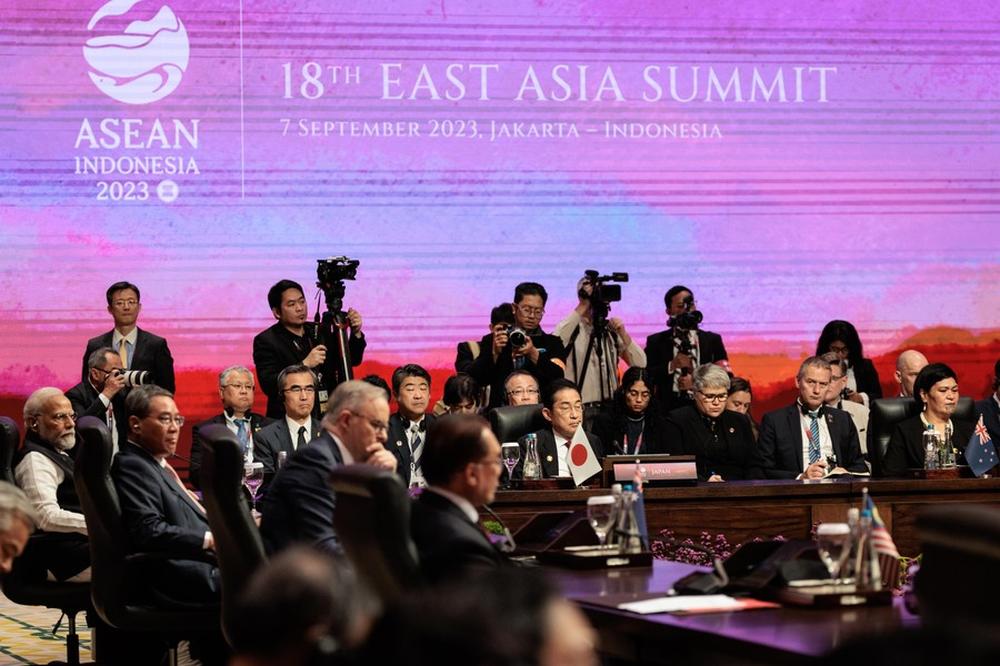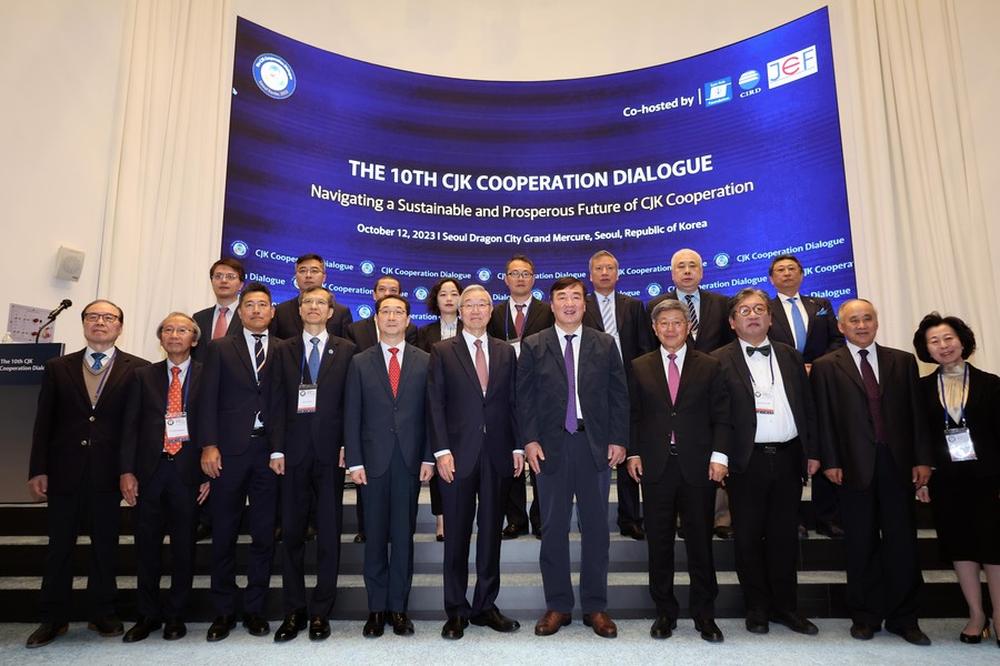- #China
- #Global Issues
- #North Korea
- #South Korea

► Due to the growing security instability in the region, the GTI has not been able to achieve much in its long history.
► The region's poor logistics is also a barrier to attracting foreign investment.
► Given the numerous diplomatic issues, conflicts, and tensions among member countries, it is crucial to at least maintain the GTI for the time being.
What is GTI?
GTI stands for Greater Tumen Initiative and is an intergovernmental organization that brings together the governments of four countries - South Korea, China, Russia, and Mongolia - to identify and implement projects to develop underdeveloped regions in Northeast Asia. The GTI is unique among other organizations discussing development in Northeast Asia, because it is the only intergovernmental organization discussing development in the region.
The GTI's key underdeveloped areas are the lower reaches of the Tumen River, where China, Russia, and North Korea share borders. To develop these areas, the GTI has discussed the development of the Russian port of Zarubino, as well as transborder tourism and transborder logistics infrastructure across China, Russia, and North Korea. All of these projects have in common that they include North Korea as a project area. However, North Korea, a former GTI member, withdrew from the GTI after its nuclear test in 2009, and related projects have not gained momentum.
Due to the growing security instability in the region, the GTI has not been able to achieve much in its long history. In the 32 years between 1991 and 2023, the GTI has not created a representative project that it can boast of. In 2014, the GTI Export-Import Bank Council was created by gathering import and export-related banks from member countries to raise capital for business promotion. In addition, the GTI Research Institution Network was created to gather research institutes from member countries to identify development projects within the areas; however, the projects have not gained much momentum.
While there are many reasons for the lack of progress, the main ones are regional insecurity, international sanctions against North Korea, and inadequate logistics - all of which have prevented significant foreign investment.
North Korea's frequent nuclear and missile tests have increased security instability in the region. Starting with its first nuclear test in 2006, North Korea has conducted a total of six nuclear tests through 2016, as well as a number of ICBM missile tests, contributing to instability in the region. As a result, the international community, represented by the United Nations, unanimously passed a resolution to impose sanctions on North Korea.
In 2014, Russia annexed Crimea, and at the same time, the international community initiated economic sanctions against Russia. In 2022, Russia invaded Ukraine and the international community further tightened economic sanctions against Russia. South Korea, a member of the GTI, participates in the economic sanctions against Russia. As a result, economic cooperation in the GTI, especially capital investment in sanctioned countries, has been hampered.
The region's poor logistics is also a barrier to attracting foreign investment. Russia and North Korea have sea ports in the lower reaches of the Tumen River, while China is landlocked and does not have access to sea ports. However, Russia and North Korea have severely restricted cross-border logistics movements in the region. From 1991 to 2022, continuous consultations were held to solve the logistics movement problem in the region, but without much success.
Despite of its lack of success, the persistence of the GTI is due to the region's symbolism and growth potential. The socio-economic significance of the region to the members is prominent. For China, the economic growth of the three northeastern provinces in which the GTI operates is important for the overall socioeconomic stability of the country. In Russia, the population of the Far East is constantly shrinking, and the development of the Far East through the stable promotion of the GTI projects is necessary for the country. Mongolia hopes to attract FDI to the country through the projects, while South Korea is interested in promoting North Korea's reform through the GTI. Therefore, regardless of the fact that the GTI has not achieved much in the past 32 years, member states have not given up on it.
Moreover, the GTI project areas are bordered by three countries, China, Russia, and North Korea, and have countries with high levels of purchasing power and investment capacity, such as China, South Korea, and Japan, in their vicinity. Therefore, once member states agree on the development of the lower Tumen River, it can be developed faster than any other region. The economic development of these regions will inevitably be accompanied by the reform and opening of the North Korean economy. It is clear that the development of the GTI project areas will lead to higher economic growth in China, Russia, South Korea, and Mongolia. That is why member states are not giving up on the continued promotion of the GTI.
What's next for GTI in the post-COVID era?
Since 2020, the unprecedented events of COVID-19 pandemic have forced most countries around the world to close their borders and suspend foreign cooperation. This was to prevent the spread of the coronavirus through the cross-border movement of people.
In the first half of 2020, all the GTI collaborations were suspended. In the second half of 2020, efforts were made by holding annual meetings of the Consultative Commission (CC) and subcommittees through video conferencing; but were mostly limited.
Beginning in 2023, discussions on the Northeast Asian development cooperation utilizing the GTI platform were resuming. A number of committees, including the Trade Facilitation Committee and the Regional Cooperation Committee, have been resumed, and the GTI Annual Meeting, which plays a key role, will be held offline. As a result, the GTI's transition to an international organization - from the management of the United Nations Development Program (UNDP) - is expected to be discussed once again. The conversion of the GTI into an international organization is expected to raise international economic interests and attract large-scale investment in developing the underdeveloped regions in Northeast Asia.
How is the changing diplomatic landscape in Northeast Asia affecting the GTI?
However, the changing diplomatic landscape in Northeast Asia is making the GTI cooperation even more challenging. The main obstacle is diverging international political interests of the GTI members. Russia is facing economic sanctions from the international community for starting the Russian-Ukrainian war. China and the U.S. are creating an economic block of trade based on de-risking. South Korea's position is to re-establish economic cooperation with China and Russia due to the sanctions against Russia and its aligning with the U.S. economic bloc. As the diplomatic landscape in Northeast Asia is in flux, member states cannot afford to pay attention to the GTI issues. As a result, the GTI project is not gaining momentum.
How should the GTI be utilized to move forward?
We don't know how long the diplomatic conflict in Northeast Asia will last. However, it is clear that the development of Northeast Asia's underdeveloped regions will serve as a driver of future economic growth. There are many issues that Northeast Asian countries can work together to solve, such as development of Arctic shipping lanes and joint responses to climate change. Diplomatic confrontations and conflicts will only be a hindrance to solve challenges that lie ahead.
Ultimately, economic cooperation in Northeast Asia is inevitable. Given the numerous diplomatic issues, conflicts, and tensions among member countries, it is crucial to at least maintain the GTI for the time being. We should continue to hold the GTI Annual General Meeting and its sub-councils and committees. When the diplomatic issues in Northeast Asia subside, we should then revitalize cooperation on the economic development through the GTI platform. The development of Northeast Asia's underdeveloped regions will be the growth engine of the region's economy in the future.
Dr. Jangho Choi is the Head of International Cooperation for Korean Unification Team, Institute for International Economic Policy. Prior to joining the KIEP, he received a Ph.D. in Applied Economics from Oregon State University, USA (2014). The main research area of his Ph.D. is International Trade, and his PhD thesis is ‘analyzes the impact of trade liberalization on multi-product firm’s productivity via the adjustment of the number of, and the amount of products’. After joining KIEP in 2014, he studied North Korea’s trade, North Korea’s international relations, the Greater Tumen Initiative developing a border area where North Korea, China, and Russia meet, and the transition of the North Korean regime. His major research includes Analysis of North Korea's Trade with China (every year since 2015); Implications of the Transitional Outcomes of Southeast Asian Countries CLMV for North Korea: Development and Application of Transition Index (2020); Study on North Korea’s Trade System: Implications for the CEPA between South and North Koreas (2018); Transition Economies’ Experience of WTO Accession and its Implications for DPRK (2018); Developing Analysis Model and Analyzing Growth Effects of South and North Korea Economic Integration (2017). The KIEP is a national policy research institute established to conduct studies, research and analyses of global economic issues, guiding the nation toward effective international economic policies. For more information, please visit (www.kiep.go.kr).

